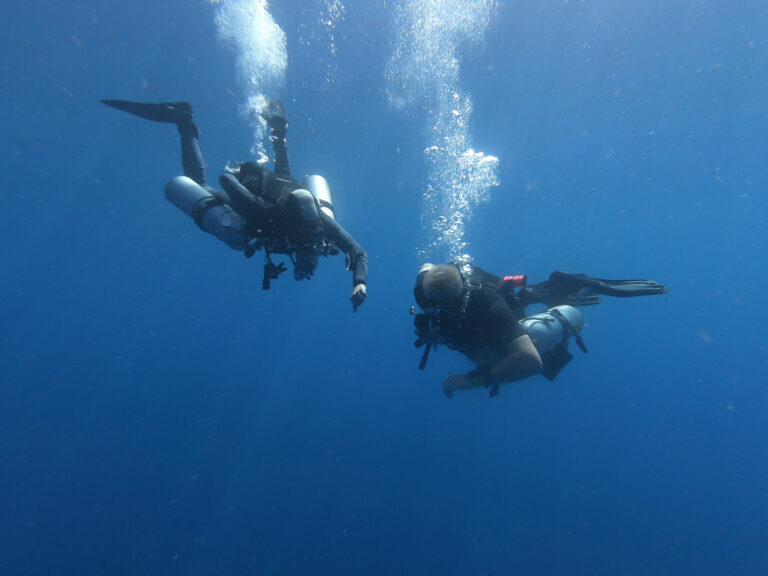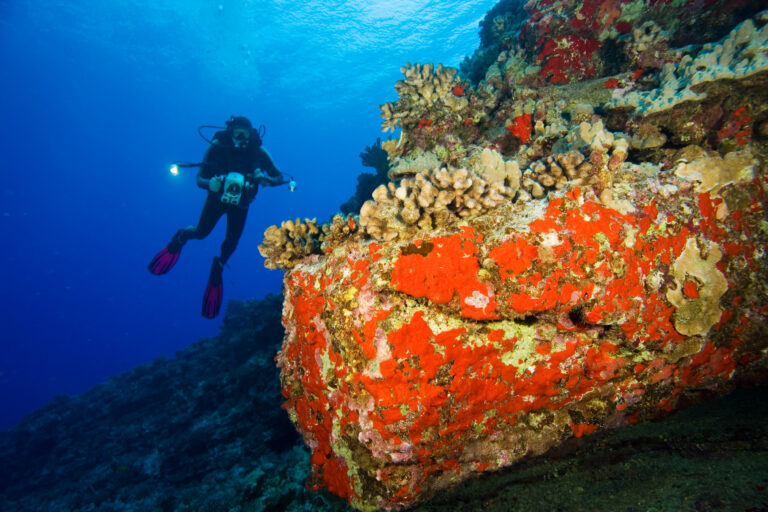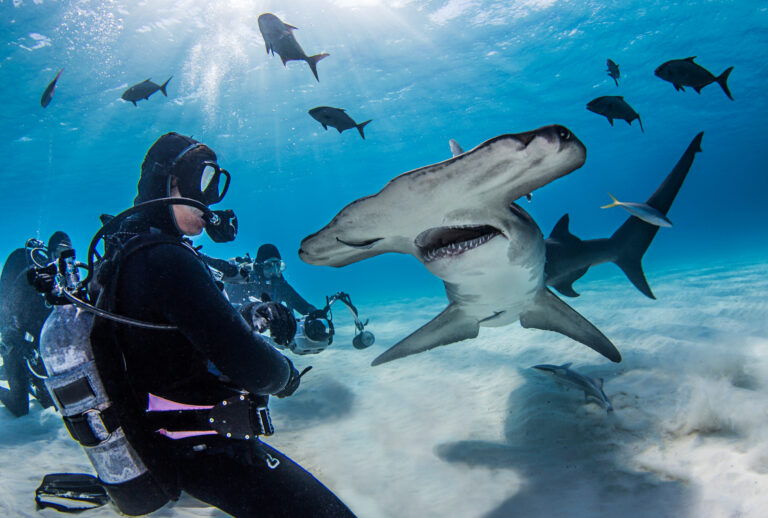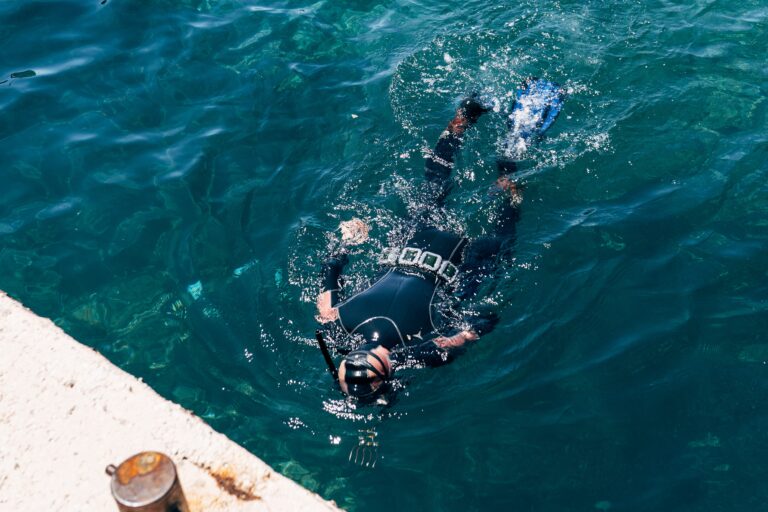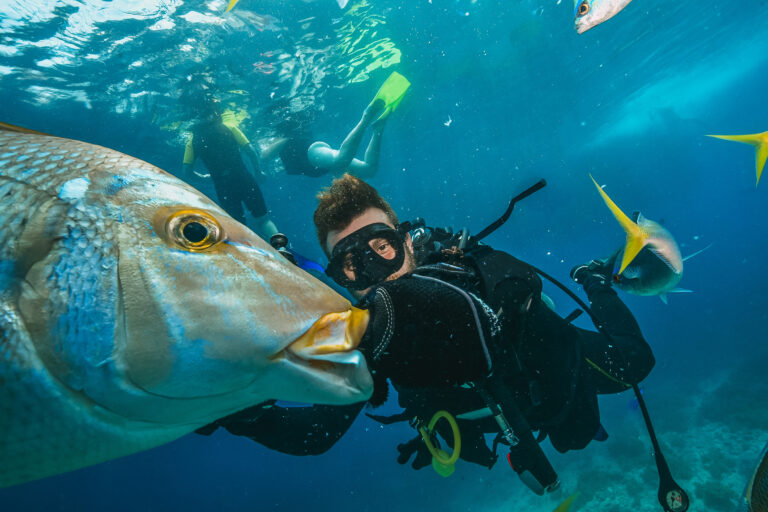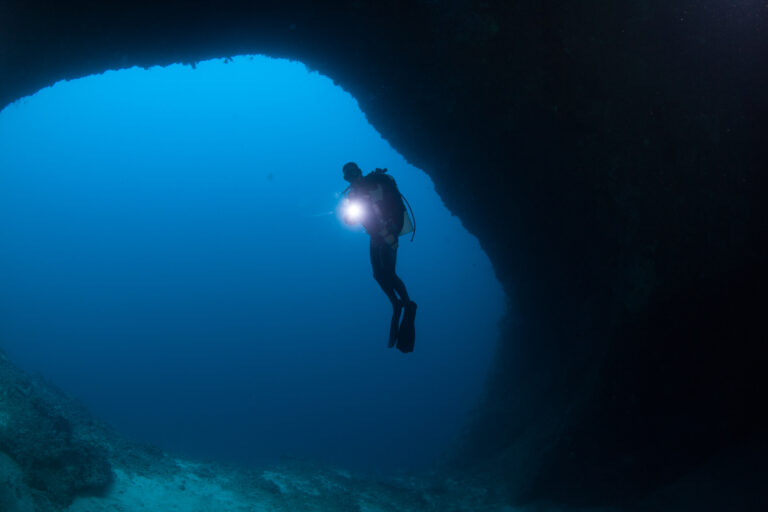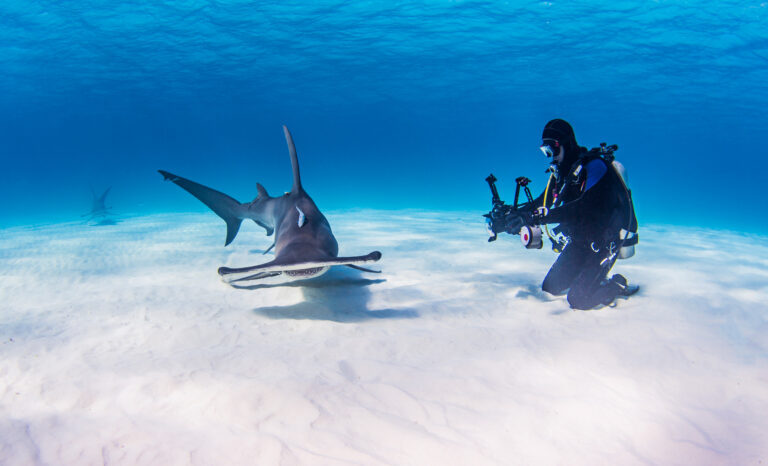Scuba Divers’ Travel Guide to the Schengen Area
Dive into a world of wonder in the Schengen Area, a zone of European countries that have abolished passport controls at their mutual borders. This allows for free and unrestricted movement, making it easy to plan multi-country diving trips and explore the diverse underwater environments of countries such as Norway, Greece, Italy, Spain, and Malta during the same diving vacation. With no need for passport checks or multipole visas, divers can enjoy the ease of crossing borders and discovering the many excellent diving opportunities within the Schengen Area. From vibrant coral reefs to fascinating wrecks and historical artifacts, the region offers something for every type of diver. While the Schengen Area is not a scuba diving destination in itself, it offers ease of travel for divers wishing to explore the many excellent diving opportunities within its borders. Its free and unrestricted movement of people makes it easy to plan multi-country diving trips and discover the diverse underwater environments of the region.
Diving destinations in the Schengen Area
Schengen in a Nutshell
The Schengen Zone, encompassing 27 European nations, offers a unique travel experience with its open-border policy. This arrangement, stemming from the 1985 Schengen Agreement and the 1990 Schengen Convention in Luxembourg, allows for seamless travel across these countries, enhancing the convenience of exploring diverse underwater landscapes and marine environments.
Within the European Union, 23 of its member states are part of the Schengen Zone. While Bulgaria, Cyprus, and Romania are set to join in the future, Ireland chooses to maintain a separate visa policy. Additionally, four non-EU countries – Iceland, Liechtenstein, Norway, and Switzerland – participate through special agreements. Monaco, San Marino, and Vatican City, though not official members, effectively function within the Schengen Zone due to their open borders.
This expansive area, home to over 423 million people and covering over 4.3 million square kilometers, offers a vast array of scuba diving destinations. Daily, approximately 1.7 million people commute across these borders, illustrating the region’s interconnected nature. The Schengen Zone not only facilitates easier access to a multitude of diving spots but also contributes significantly to the ease of transporting diving equipment and related goods across countries, enriching the diving experience.
Location and Geography
The Schengen Area, a unique union of 26 European countries, offers an extraordinary range of scuba diving experiences due to its diverse geographical settings. From the crystal-clear waters of the Mediterranean in countries like Spain, Italy, and Greece, to the mysterious wrecks in the colder, yet no less captivating, Baltic and North Seas off the coasts of Germany and the Netherlands, the Schengen Area is a treasure trove for divers. The region’s varied underwater landscapes include vibrant coral reefs, steep underwater cliffs, and historic shipwrecks, making it an ideal destination for both beginners and experienced divers. Additionally, the freedom of movement within the Schengen Area allows divers to easily explore multiple countries and dive sites on a single trip, experiencing a variety of marine ecosystems and cultures.
Visa and Entry Requirements
When planning a scuba diving trip to the Schengen Area, it’s essential to understand the visa and entry requirements. Citizens from countries outside the Schengen Agreement may need to apply for a Schengen Visa, which allows travel within the member countries for up to 90 days within a 180-day period. The application process typically involves submitting a completed application form, passport-sized photos, travel itinerary, proof of accommodation, travel insurance, and a cover letter explaining the purpose of the visit. Some nationalities are exempt from this visa requirement for short stays, so it’s crucial to check the specific requirements for your country. Additionally, ensure your passport is valid for at least three months beyond your departure date from the Schengen Area. It’s also advisable to stay updated on any changes in entry requirements due to health and safety protocols or political changes, which can affect travel plans.
Best Time to Visit
Scuba diving in the Schengen Area offers a diverse range of experiences, with the best time to visit varying depending on the specific country and diving site. Generally, the optimal period spans from late spring to early autumn, roughly May through September. During these months, the waters of the Mediterranean, which bathe many of the Schengen countries’ coasts, are at their warmest and clearest, providing excellent visibility and comfortable diving conditions. For instance, the balmy seas of Greece and Italy are ideal in this period, boasting vibrant marine life. However, for those seeking a more adventurous dive, such as in the cooler, nutrient-rich waters of the Nordic Schengen countries, late summer to early fall is preferable, when the water temperature is relatively warmer, and the unique marine fauna is more active. It’s crucial to consider local climate variations and peak tourist seasons, as some areas can get crowded, potentially impacting the diving experience.
Accommodation Options
When planning a scuba diving trip, the best time to visit can vary depending on the destination. For those looking to explore “Accommodation Options,” it’s crucial to consider both the diving conditions and the availability of lodging. Typically, the peak diving season offers the most favorable underwater conditions, such as higher visibility and calmer seas, which usually coincides with the tourist high season. During this period, accommodation options range from luxurious resorts to budget-friendly guesthouses, but it’s essential to book well in advance due to high demand. On the other hand, the off-peak season might offer fewer crowds and potentially lower prices, but divers may need to contend with less predictable weather and varying underwater visibility. Therefore, it’s important to balance the quality of the diving experience with the type of accommodation desired, and plan accordingly to get the best of both worlds.
Transportation Within the Schengen Area
Scuba diving enthusiasts planning to explore the underwater marvels within the Schengen Area benefit from streamlined transportation options that make navigating across member countries both convenient and efficient. As a unified zone without internal borders, the Schengen Area allows for hassle-free travel by road, rail, and air between its member countries, offering divers easy access to a diverse range of diving destinations. Rail networks like the Eurail connect major cities and picturesque coastal towns, ideal for those seeking scenic overland journeys. For faster travel, numerous budget airlines offer affordable and frequent flights between Schengen countries, swiftly connecting top diving spots. Additionally, car rentals are widely available, providing the flexibility to explore remote dive sites at your own pace. With these varied transportation options, divers can effortlessly journey across the Schengen Area, immersing themselves in the rich aquatic biodiversity and distinct cultural experiences each country offers.
Currency and Payment Methods
In the Schengen Area, the Euro (€) is the primary currency used across most member countries, offering seamless transactions for scuba divers traveling within this zone. Credit and debit cards are widely accepted at dive shops, hotels, and restaurants, especially in popular diving destinations like Greece, Spain, and Italy. However, it’s advisable to carry some cash for smaller, local dive operators or in remote areas where digital transactions may not be as prevalent. ATMs are readily available in urban and touristic areas, making it easy to withdraw cash as needed. It’s essential to notify your bank of your travel plans to avoid any issues with card transactions, and consider the benefits of using cards with no foreign transaction fees. For non-Euro countries in the Schengen like Croatia, it’s important to check the local currency requirements. Always keep some change handy for small purchases or tips, as it’s a common practice in many diving locales.
Language and Communication
In the Schengen Area, a scuba diving enthusiast may encounter a multitude of languages, given the region’s diverse cultural and linguistic landscape. Key languages include French, German, Italian, Spanish, and several others, depending on the specific country within the area. For effective communication, divers are advised to learn basic scuba-related terms in at least one of these languages. However, English is widely understood in the diving community and is often used as a common lingua franca. Dive operators in the Schengen Area typically have multilingual staff to assist divers from various backgrounds. It’s also beneficial to familiarize oneself with universal diving hand signals, which transcend language barriers and ensure clear, unambiguous communication underwater. This is essential not only for safety and coordination but also for sharing the excitement of discovering the underwater wonders that the Schengen Area has to offer.
Local Culture and Attractions
The Schengen Area, encompassing numerous European countries, offers a rich tapestry of local cultures and attractions, enhancing the scuba diving experience. Each nation within this zone boasts its own unique charm; from the romantic canals of Venice, Italy, ideal for post-dive relaxation, to the historic streets of Athens, Greece, where ancient history melds seamlessly with modern vibrancy. In Spain, divers can indulge in the lively fiestas and savor traditional tapas after exploring underwater treasures, while in France, the allure of Parisian cafes and the Riviera’s glamour add a touch of elegance to the diving adventure. The Schengen Area is not just about underwater exploration but a journey through diverse cultural landscapes, traditional cuisines, and historic landmarks, offering an enriching experience both below and above the water.
Cultural Etiquette and Tips
Scuba diving in the Schengen Area, encompassing numerous European countries, presents a rich tapestry of cultures, each with its own etiquette and customs. Divers should be mindful of local norms, especially in terms of environmental conservation and respect for historical underwater sites. It’s advisable to familiarize yourself with the specific regulations and guidelines of the country you are visiting, as they can vary significantly. For instance, some areas may have strict rules about touching or photographing certain marine life or artifacts. Showing appreciation for local customs, such as greeting dive staff in the local language and adhering to customary tipping practices, enhances mutual respect. Additionally, being punctual and respecting group dive schedules reflects well on one’s diving etiquette. Above all, a respectful and environmentally conscious approach will ensure a harmonious and enriching diving experience in the diverse and culturally rich Schengen Area.
Local Laws and Regulations Relevant to Tourists
In the Schengen Area, scuba diving tourists must navigate a variety of local laws and regulations that vary by country. While the Schengen Agreement allows for borderless travel among member states, it’s important to note that each country maintains its own specific diving regulations. These can include certification requirements, where PADI or equivalent certification is generally accepted. Divers should also be aware of restrictions on diving locations, such as protected marine areas where permits are required or certain zones are off-limits to preserve ecological balance. Furthermore, equipment standards, including safety gear, are strictly enforced, and in some countries, local diving insurance may be mandatory. It’s essential for divers to research the specific laws of the Schengen country they plan to visit and adhere strictly to them to ensure a safe and legal diving experience.
Safety Tips and Emergency Contacts
When scuba diving in the Schengen Area, safety should always be your priority. Ensure that your diving equipment is in excellent condition and familiarize yourself with local diving regulations, as these can vary between countries. Always dive with a buddy and within the limits of your training and experience. Be aware of local marine life and environmental hazards. In case of an emergency, it’s crucial to know the local emergency contact numbers. For medical emergencies, dial the Europe-wide emergency number 112. Additionally, keep the contact information of the nearest decompression chamber and local coastguard at hand. Remember to check with your dive center for any specific safety protocols and emergency procedures relevant to the dive sites you plan to visit. Staying informed and prepared will help ensure a safe and enjoyable diving experience in the Schengen Area.
Health and Travel Insurance
When planning a scuba diving trip to the Schengen Area, it is crucial to secure comprehensive health and travel insurance. The Schengen Area, encompassing many European countries, is known for its varied diving experiences, from the mystical underwater caves in Greece to the vibrant marine life in the Mediterranean Sea. However, diving always carries inherent risks, and the medical facilities and costs can vary significantly across these countries. A robust health and travel insurance policy should cover not only general medical emergencies but also specific diving-related incidents, such as decompression sickness treatment. It’s also advisable to check that your policy includes coverage for possible trip cancellations, lost diving gear, and hyperbaric chamber treatments, if needed. Since the Schengen Area enforces strict regulations for visitors’ insurance coverage, ensuring that your policy meets these requirements is essential for a worry-free and safe diving adventure.
Dive Operators and Dive Shops
Scuba diving in the Schengen Area offers an abundance of diverse underwater experiences, thanks to its range of unique destinations, each with its own distinct marine environments. Dive operators and shops across the Schengen Area are typically well-equipped and adhere to international safety standards, offering services from equipment rentals to certified diving courses. In popular diving spots like the crystalline waters of the Mediterranean in Spain and Greece, or the intriguing wrecks in the colder Baltic Sea, divers can find operators catering to all levels of experience, from beginners to advanced divers. Language barriers are minimal, as many dive shops have multilingual staff. It’s advisable to check for PADI, SSI, or CMAS certification when choosing a dive operator to ensure a safe and professionally guided experience. Additionally, some dive shops specialize in specific types of dives, such as night dives or cave explorations, allowing for a more tailored diving adventure. Always remember to book in advance, especially during peak season, to secure your spot in these sought-after diving destinations within the Schengen Area.
Packing List for Scuba Diving in the Schengen Area
As you prepare for your journey, a well-thought-out packing list is crucial to ensure a safe and enjoyable experience.
Essential Documents
- Passport: Ensure it’s valid for at least six months beyond your planned stay.
- Visa (if required): Check visa requirements for your specific nationality.
- Diving Certification: Carry your certification card at all times.
- Dive Insurance: Opt for comprehensive dive insurance covering emergencies.
- Health Insurance: Ensure it covers activities like scuba diving.
- Travel Insurance: To cover trip cancellations or lost baggage.
- Emergency Contact Information: List of contacts in case of an emergency.
Diving Gear
- Wetsuit/Drysuit: Based on water temperature. The Mediterranean can be warmer, but Northern areas require thicker suits.
- BCD (Buoyancy Control Device): Essential for controlling your buoyancy underwater.
- Regulator with Pressure Gauge: Ensure it’s serviced and suitable for the type of water you’ll dive in.
- Dive Computer: Crucial for monitoring depth, time, and decompression limits.
- Mask, Snorkel, and Fins: Comfortable and well-fitting.
- Dive Gloves and Boots: For protection and warmth in colder waters.
- Dive Knife: For safety and practical purposes.
Additional Equipment
- Dive Light: For exploring caves or wrecks.
- Surface Marker Buoy (SMB): Essential for safety, especially in boat diving areas.
- Underwater Camera: For capturing the underwater scenery.
- Logbook and Pen: To record your dives.
- Mesh Bag: For carrying and rinsing your gear.
- Waterproof Bag/Container: To keep your electronics and valuables dry.
Personal Items
- Travel Clothing: Adaptable to varying climates in the Schengen Area.
- Sun Protection: Sunscreen, hat, and sunglasses.
- First Aid Kit: Include motion sickness medication if prone to seasickness.
- Travel Adapters: For charging devices, Schengen countries use Type C or F plugs.
- Language Guide: Handy phrases in local languages can be helpful.
- Cash and Credit Cards: Not all places accept cards, and having local currency is useful.
Tips for Packing
- Check Airline Restrictions: For weight limits and regulations regarding diving gear.
- Service Your Gear: Before the trip to ensure everything is in working order.
- Pack Efficiently: Use space-saving techniques and consider multi-functional items.
- Prepare for the Unexpected: Extra o-rings, mask straps, and fin straps can be lifesavers.
- Respect Local Regulations: Be aware of any specific rules regarding diving in different Schengen countries.


